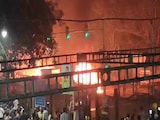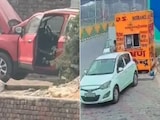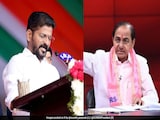It's election results time in Bihar, and if there's one man the country has its eyes set on, it is Nitish Kumar. Once called the architect of Bihar's development, his leadership has been under intense scrutiny amid shifting alliances and a resurgent opposition.
Kumar is banking on his track record, including recent infrastructure and urban projects, as well as welfare schemes to secure another term. The opposition INDIA alliance, led by Tejashwi Yadav's RJD, has been aggressively pointing out unemployment, migration to capitalise on public dissatisfaction.
All About Nitish Kumar
Nitish Kumar was born on March 1, 1951, in Bihar's Bakhtiarpur to Kaviraj Ram Lakhan Singh and Parmeshwari Devi. He earned a degree in Electrical Engineering from Bihar College of Engineering (now NIT Patna) in 1972. A year later, he married Manju Kumari Sinha, a teacher, and the couple had one son, Nishant. His wife died in 2007.
Nitish Kumar entered politics during the JP Movement led by Jayaprakash Narayan. Much like his contemporary Lalu Prasad Yadav, he was arrested under the Maintenance of Internal Security Act (MISA) in 1974 and during the Emergency in 1975.
He joined the Janata Party and unsuccessfully contested his first assembly elections in 1977. His first victory came in 1985.
In 1989, he was elected to the ninth Lok Sabha and served as Union agriculture minister. He was re-elected in 1991.
In 1990, Nitish Kumar played an instrumental role in making Lalu Yadav the chief minister. Their alliance, however, witnessed cracks in 1994, and he resigned from the Janata Dal. Nitish Kumar co-founded the Samata Party with George Fernandes in 1994.
He served as a Cabinet Minister at the Centre under the NDA government, handling Railways (1998-1999, 2001-2004), Surface Transport (1998-1999), and Agriculture (1999-2000).
He resigned as Railway Minister in August 1999 following the Gaisal train disaster.
On March 3, 2000, he was sworn in as Bihar chief minister for his maiden term. It lasted only seven days after Nitish, faced with the lack of numbers, resigned.
In 2003, the Samata Party merged into Janata Dal (United). In the 2004 Lok Sabha elections, Nitish was elected from Nalanda but lost from Barh.
His first big win in Bihar came a decade after he parted ways with Lalu when the JD(U)-BJP coalition defeated RJD in 2005. Nitish was sworn in as the chief minister for his first full term.
He was re-elected in 2010 with a landslide victory, and the JDU-BJP coalition juggernaut reduced RJD to 22 seats.
In 2013, he parted ways with the BJP over Narendra Modi's prime ministerial candidacy and formed the Mahagathbandhan (Grand Alliance) with RJD and Congress in 2015. He led the Grand Alliance to victory in the 2015 state polls.
In 2017, he ended the alliance with RJD over corruption allegations against deputy chief minister Tejashwi Yadav, rejoined the NDA, and resumed office the same day.
In the 2020 polls, Nitish Kumar-led NDA to victory to return as chief minister. Then, in August 2022, he resigned, left NDA, and rejoined the Mahagathbandhan, forming a new coalition government.
On January 28, 2024, he resigned from Mahagathbandhan, rejoined the NDA, and was sworn in as Chief Minister for the ninth time.
This frequent changing of alliances earned him the nickname "Paltu Ram" but he is also known to have one of the best survival instincts in politics.















